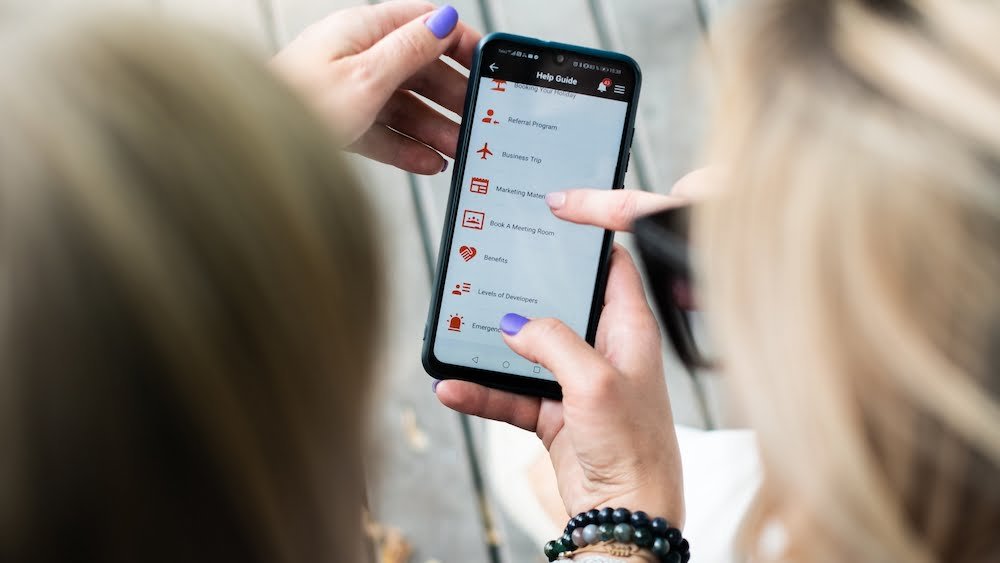Over the last decade, customer demand and innovation have been on the rise since. Since 2016, mobile app downloads have steadily increased, topping 200 billion in 2019. And, in 2020consumers downloaded 230 billion mobile applications to their connected devices, rising more than 63% from 140.7 billion app downloads in 2016.
But that has not changed the mobile app development process apart from some little add-ons, process elimination, and technology upgrades.
The availability of modern technology has sped up the development of mobile apps, especially with the app solutions at your disposal. The concern is, can your mobile app become the next big thing, such as Uber, Tiktok, etc.?
Differentiating your app will be quite a struggle with a higher level of competition and new applications being released daily. You need to hire an experienced mobile app developer in Calgary to make your application stand out amongst the rest with exquisite UI.
If you have a question about how to make an app from scratch, then this blog is the answer. Here, we share a quick overview of the mobile app development process in N different steps and activities involved in each step.
Let’s get started
Planning and Research
Usually, the first step in the mobile app development process involves planning that extends the scope of the app by conducting market research and a feasibility test.
Here, you should seek answers to questions like—
- “Can I get people who know how to make an app from scratch?”
- “Are there other apps that perform what my app will do?”
- “Is there a need for my app?”
- “What is my app’s value proposition?”
- “Can this app add value to people with this set of features?”
First, determine if there is a market niche for your app concept before investing significant resources in developing and promoting it. Moreover, choose which platforms your app will support (iOS, Android, Web, etc.).
Here, you can choose between a hybrid strategy or native app development for each platform when creating an app that runs on multiple mobile OS. Here, you can also consider the level of competition and the demographics of your target market before settling on a platform for your app.
The success of a mobile app is determined based on how well users accept it and benefit from its features. This step in the mobile app development process will help you fix the budget as you will get an idea of features to include, the number of resources to hire, and the time it will take to create an app. The objective here is to have a proper structure of the app process ready and address any bottlenecks before moving ahead with the project.
Mobile App Design
Know what data or information your mobile app will display to the users, how the app will gather data, and how users interact with the app.
In this phase, you must decide on a technological architecture and technology stack that goes into designing. Your app information and architecture will be based on the design philosophy that translates into your app’s interface. This will also define user roles and privileges to get the most out of your mobile business app.
App Wireframing
The wireframe of your mobile application determines how the users will interact and navigate within the app. Wireframes are also referred to as low-fidelity mockups that offer conceptual layouts with visual shapes to support the functional needs of your mobile app users. They are more likely to pay attention if the design is simple and easy to use.
Iterations using wireframes during the design review process is a speedy and cost-effective way to build app layouts. This phase of wireframe design does not need you to consider colour schemes or styles as the idea is more on the navigation, button placements, and overall front-end structure than styling.
UI Style Guides
Style guides for mobile applications are the foundation for your app’s visual style. Your app’s usability will improve greatly if you follow a well-established style guide. For example, your call to action (CTA) button on one screen cannot be blue / at the bottom and green / at the header. Users are more likely to feel at ease with your app if it has a consistent design language.
Rendered click-through models
Once you render all the screens, it is time to apply the click-through model and test your app again. This is the mobile app development step where you want to take your time and get things right.
When you hire a front-end developer for the app development, they send you the link to open and navigate the mock app. You can click through the wireframe and get a first-hand experience of what it is like to use the app.
Remember, the application will not have any functionality, but you can still get the design and UI to get a better idea.
Mobile App Development
This is the stage where your ideas come to life. You’ll probably need to hire a flutter app developer if you are looking for a cross-platform app. Here, developers of the native application will write code for the “final” version of the app. Here, you can utilize inputs of the wireframes to make some last and more significant changes, if necessary.
Here, developers can choose the waterfall or an agile approach. Usually, the mobile app development process will have two different teams working in tandem, viz, design and development. And two development teams function parallelly; Frontend and Backend.
Frontend development
Front-end developers will create the app’s user interface based on the style guide and wireframes. When planning and building the front end of a mobile app, several factors to keep in mind include features, MVP (Minimum Viable Product), usability, functions, etc.
What the MVP does is what your product needs from the customer’s perspective. Priorities are set based on the development stage and the demand level, including carrying out some of the following tasks.
- Local data storage
- Testing to find bugs and address those
- UI development and enhancements
- Proper data synchronization
- App deployment
- Adhering to wireframes
Backend development
Backend server performance and scalability are equally important as the UI/UX of the application itself. Writing code for the backend requires development to consider a range of factors, including a programming language, database, wireframes, available APIs, etc.
Once the app developers know the exact requirements, they can work on coding for the application’s aesthetics and functionality. Ultimately, they ensure your mobile app’s displays do justice to your planned UI that aids UX for enhanced usability.
- Expand the backend structure
- Integrating push-notifications
- User action management
- Server-side logic scripting
- Data integration
- Ensuring top-notch UX
Application Testing
Quality Analysis (QA) is integral to the mobile app development process. The QA team performs multiple tests that increase the app’s reliability. Functional and performance testing help verify that the app works properly, is quick, and can manage heavy traffic.
User experience is a primary focus of usability testing. App testing takes place on various devices and device emulators to ensure that it works properly across various display sizes.
Two major testing includes the following;
- Functional Testing: This test meets your functional requirements throughout the app testing phase. The goal is to verify that the application has all its features working properly.
- Non-Functional Testing: This testing will emphasize the application’s quality to test non-functional variables like usability, scalability, security, time, etc.
Deployment and Support
You need to submit your application to its respective play stores; Google Play Store for Android and App Store for iOS apps. Your mobile app won’t work unless you have a developer account with the Apple App Store or Google Play Store.
This is the final phase where the App Store will verify your iOS application to ensure it follows its policies’ necessary protocols.
Include metadata for an app’s release in the app store, which includes:
- App Title
- App Description
- Category
- Keywords for App Store Optimization
- Launch Icon
- Application Screenshots
The evaluation process for apps in the App Store can take anything from a few days to a few weeks to finish. Unlike iOS, Android applications need not go through any reviews. Your application will be up and live on Google Playstore a few hours after the submission.
Bottomline
Remember, your app development process is continuous, including some back & forth after publishing it to the app store. This includes receiving user feedback and building new functionality that adds value. The most important thing is to build an expert team that leads you through all steps of the mobile app development process by ensuring a high level of app integrity.
The best way to get started is to find the best mobile app development company in Canada that knows how to make an app from scratch. You need not hire a front-end developer, QA tester, and other resources separately.
At Frendeal, we provide android and iOS app development services in Calgary to fulfil the app requirements that keep you ahead of the curve with the latest features and technology.
Speak to our mobile app development expert and discuss your app idea after signing the NDA.





